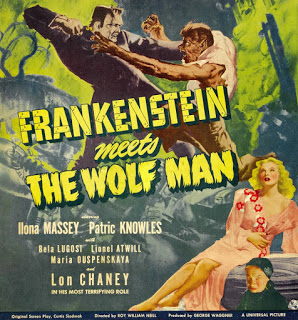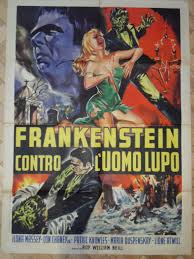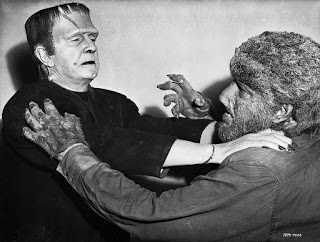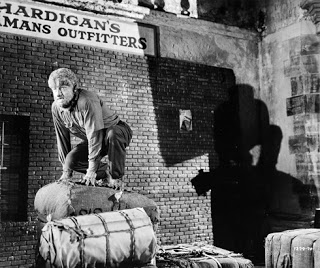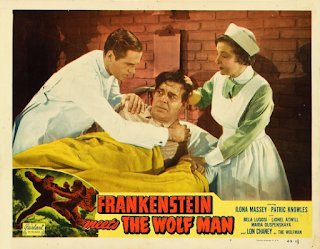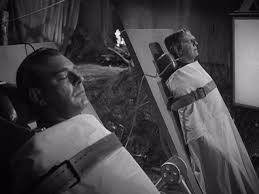Frankenstein Meets
the Wolf Man
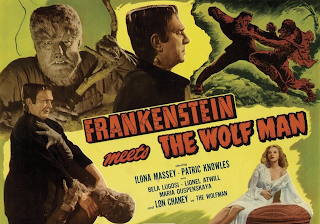
Director: Roy William Neill
Year: 1943
Rating: 6.0
By the time of
this film in 1943 the popularity of the Universal horror films was beginning
to diminish. So someone came up with the idea of stuffing various Universal
monsters into one film – like cheese and sausages inside pizza crust - so
here we get both the Wolfman from the successful 1940 film and Frankenstein
who had been in a few Universal films. This trend continued the following
year with House of Frankenstein and then in 1945 with House of Dracula.
